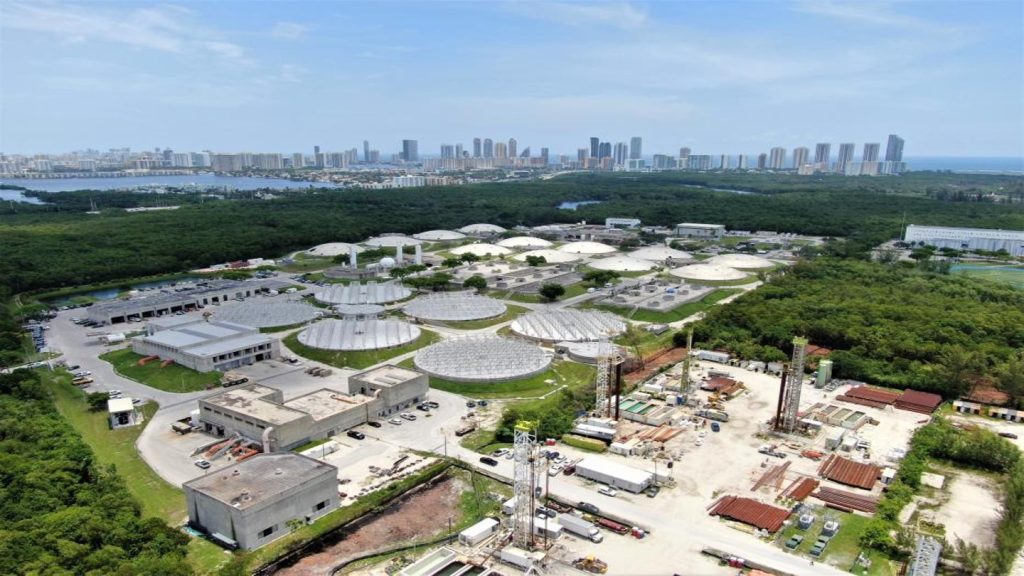Wood, in many parts of the world, has a cultural and spiritual significance that no other building material can match. Found in abundance and needing minimal expertise to manipulate, it is intrinsically linked with our most primal needs of warmth, food and shelter and has played a central role in the development of countless civilisations. Somewhat surprisingly though, this hasn’t stopped the material from going through long and frequent bouts of unpopularity among architects and designers.
Deemed by many European architects to be unsophisticated and incapable of evoking the same grandeur as stone, wood was largely neglected from the Renaissance period right through to the end of the 17th century. The agricultural revolution, which saw the destruction of vast swathes of forest across the Western world, and the increasing industrialisation of production processes during the 19th and 20th centuries, caused Frank Lloyd Wright to liken “carpentry and millwork” to “butchery and botchwork”.
Wood is good
In recent times, the pendulum has begun to swing the other way. The invention of man-made composite wood products has greatly reduced waste from deforestation and successful tree planting schemes in countries such as New Zealand and Norway have proven the material to be a truly sustainable alternative. Versatile, attractive and sturdy enough to withstand the most severe climatic conditions, wood is being used in an increasing number of projects.
One standout example of this resurgence is Barents House in northern Norway, a cultural and civic centre built from locally sourced recycled wood. Upon completion, it will be the tallest wooden structure in the world. Designed by Reiulf Ramstad, who has been exploring the potential of the material for the past 15 years, Barents House stands on a 10,000m² site in the town of Kirkenes, only a few miles from the Russian border.
“It wasn’t actually our intention to build the tallest wooden building in the world – that’s just how it turned out,” Ramstad says. “The Norwegian Government’s desire to broaden cultural exchange with Russia is the backdrop of this project.”
See Also:
The recent battle over Arctic land rights and the rise of pollution from northern Russia’s nickel mines has led to occasionally fraught diplomatic relations between the two countries. The 17-storey Barents House will look to promote cultural understanding between the neighbours and remind citizens on either side of the border of their shared history. From 1740 until the Russian Revolution of 1917, the Pomor trade axis between northern Russia and northern Norway drove the economic development of the region. This alliance and the cultural influence it had on the nations was the main inspiration behind Ramstad’s design.
How well do you really know your competitors?
Access the most comprehensive Company Profiles on the market, powered by GlobalData. Save hours of research. Gain competitive edge.

Thank you!
Your download email will arrive shortly
Not ready to buy yet? Download a free sample
We are confident about the unique quality of our Company Profiles. However, we want you to make the most beneficial decision for your business, so we offer a free sample that you can download by submitting the below form
By GlobalData“During the Pomor, wood was a very important resource,” he explains. “More traditional Norwegian buildings, especially churches in the north of the country, take their inspiration from the domes of Russia and the close-orient. The Arctic, with its vast organic and non-organic resources, along with the opening up of the north-east passage, has made building relations between the two countries important once more.”
The building’s northerly location brings with it a host of other practical challenges. Freezing cold temperatures and persistently strong winds require steel reinforcement, and measures must be taken to make it as warm yet energy efficient as possible. To this end the tower uses integrated systems that allow it to adapt to the changing seasons, resulting in year-round carbon neutrality. In addition, all biodegradable household and industrial waste that it produces will be reused as biogas.
“The climatic conditions necessitated the use of steel joints,” Ramstad explains. “Static problems can only be resolved with multiple materials working together. Through this combination, not only is the building optimised from a fire protection and acoustic perspective, but an energy calculation of its lifecycle turns out pretty well compared to many other modes of construction.”
Fairy tales from forest
Meanwhile, back in the UK, an energetic architecture practice called Studio Weave is also looking to take inspiration from its project locations. Recently hailed by the Observer‘s Rowan Moore as one of the UK’s brightest young architecture prospects, and making great use of natural materials such as wood, the firm creates narratives and fairy tales to personify landscapes and design propositions, reaching out to local communities for inspiration.
“Most of our projects have been for public spaces and so will become part of people’s lives,” says Maria Smith, one half of the practice. “We try to gather specific anecdotes to get some universal understanding of a place. Physical characteristics, folklore, mythology all play a role in defining a structure’s sense of place.”
At Kielder Water in Northumberland, Weave has designed two small but intricately crafted wooden structures on opposite banks of the reservoir that will provide a resting place for visitors walking or cycling around the lake. The structures are built upon a foundation of long, stem-like supports, the interior decoration inspired by the trees and flowers of the forest. The design is influenced by prose, an imagined love story between the inhabitants of the two huts, Robin and Freya.
“A lot of our projects are based on fairy tales as we think that architecture should be approached on a human-to-object basis,” Smith says. “Wood is perhaps easier to personify than other materials. Every piece is individual and you can see its characteristics – the grains and knots.”
The project takes inspiration from its environment in less obvious ways. The huts themselves and the surrounding landscape blur the boundaries between natural and man-made, challenging our preconceptions of beauty and authenticity. In Smith’s view, this consideration is particularly important in a country like the UK, in which centuries of heavy cultivation have affected perceptions of what is and isn’t a human construct.
“Kielder Water is an odd place because what looks natural is soon revealed as a completely man-made landscape,” Smith says. “At first it’s staggeringly beautiful, but then you realise that all the trees are in line and the same height. Rather than just putting an architectural object into a natural landscape, we decided to write a love story to celebrate its fakeness.”
July 2010 saw the unveiling of the UK’s longest bench, a winding, contorted structure unveiled by Weave on the Littlehampton seafront. Like Barents House it uses recycled materials, in this case reclaimed hardwood, perfectly preserved for 30 years in seawater, demonstrating the aesthetic potential of this constantly transforming material.
“We found a place that was reclaiming timber from old groins that had been used on beaches since the 1970s,” Smith says. “From early on we wanted to play with colour and tone. We have a variety of species, from very pale yellowy-white to dark black, and they are all greying to different degrees, so the material really lends itself to attractive and evolutionary design.”
Although Ramstad and Smith may be dealing with very different types of project, they are driven by similar fundamentals. Both see architecture as a product of its time and place, a complementary addition to an area and the lives of its citizens, rather than a solely expressionistic form. Both firms place great emphasis on consultation with the local community, with Studio Weave in particular carrying out projects in conjunction with local primary schools and community groups.
“We believe strongly in site-specific installations,” Ramstad says. “Architecture is not a moving concept. Barents House is built with structures and materials that are dimensioned to the climatic and cultural conditions of the Arctic Circle. After 15 exhausting years of working in a scene obsessed with forms and images, it’s nice that the big questions of energy consumption and site awareness are finally taking on greater importance.” When I tell Ramstad about Weave’s approach to design, his reaction is positive. With the world becoming smaller and cities increasingly generic, he believes that small-scale projects are useful ways to focus the architect’s mind on the finer details.
“I love to look at Manhattan,” he says. “The workers come down from the gigantic skyscrapers and go to a street vendor outside to get a sandwich for lunch. The contrasting image is quite striking. It’s pleasing to see small-scale projects with great attention to detail. All of what we do is, ultimately, about people.”







